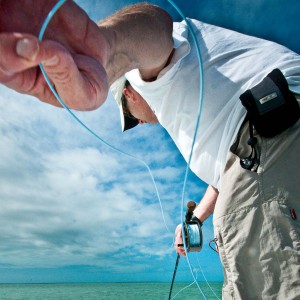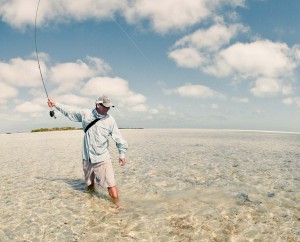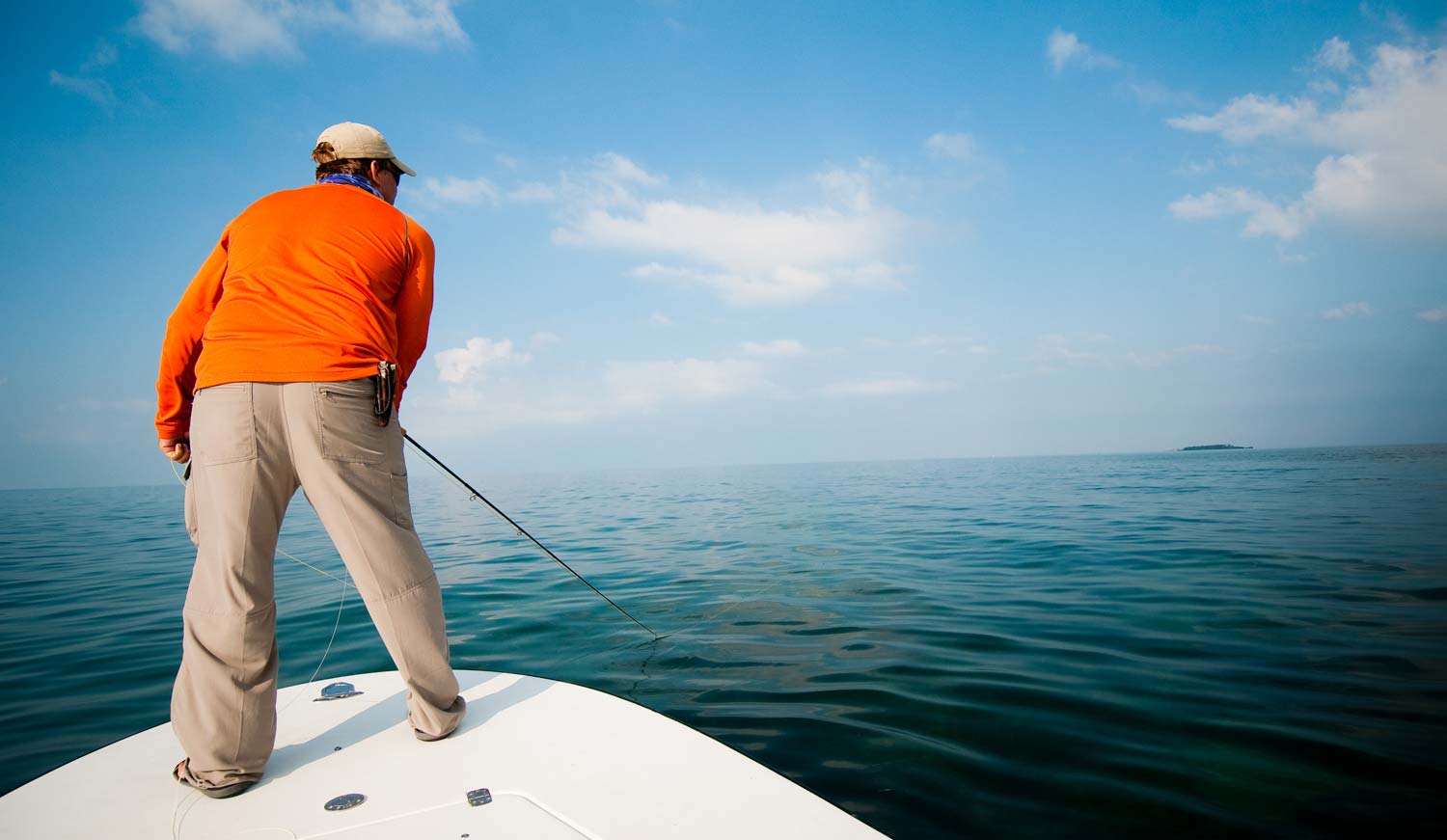By Louis Cahill
You’ve spotted the bonefish and made the perfect cast, what now?
The retrieve is where the magic happens. It’s your sales pitch to the fish and if you want to seal the deal you have to make that fly act like food. It’s a simple proposition but there are a lot of things to keep in mind. Ultimately, your retrieve is determined by three things: the setup, the conditions and the reaction of the fish.
Every presentation to a bonefish is different. That’s what makes targeting these fish so much fun. To be really successful you need to have a good understanding of the fundamentals of the retrieve and be able to adapt when things change.
With that in mind, here are 8 tips for better bonefish retrieve.
Does the fly matter?
By this I mean, do we retrieve flies differently based on the critter they imitate? To be honest, I think bonefish are pretty forgiving on this one, but I do fish as if it matters. That means I try to swim the fly like the natural would swim. Shrimp patterns get a rhythmic pulsing retrieve, crab patterns scurry and dive, baitfish patters swim more fluidly.
Look scared
 Your fly not only needs to imitate the natural, it need to appear to be in distress. Like all predators, bonefish will prey on the weakest. I like for my fly to appear to panic a bit when the fish sees it.
Your fly not only needs to imitate the natural, it need to appear to be in distress. Like all predators, bonefish will prey on the weakest. I like for my fly to appear to panic a bit when the fish sees it.
Speed is dictated by the presentation
The speed of your retrieve should vary depending on the setup of your presentation. Bonefish are not accustomed to having shrimp charge toward them. If the setup of your shot means that you have to retrieve the fly towards the fish, your retrieve must be slow, as if your shrimp is clueless. Bonefish like to chase, so quick retrieve can get their attention if the fly is off to their side, moving away. Sometimes you will have to speed up or slow down your retrieve to get the fly in the fish’s field of vision. Pay attention to the relationship of the fly to the fish and the fish’s behavior.
Long strip vs. short strip
The length of your strip will be determined by the conditions. Ideally you want your fly to move in short bursts and appear to be fleeing the bonefish. How much your fly actually moves is greatly influenced by water current and wind. If the current is pushing the fly back towards you, and the wind is blowing the boat towards the fly, you will have to make a very long strip to move the fly at all. If the current is flowing away from you and pulling your line tight, a short strip is all that’s needed.
Watch your line
When dealing with conditions like those described above, the best way to tell if your fly is fishing properly is to watch your line. If your line is relaxed and not under tension, even when you are stripping, you’re not fishing at all. You’ll need to strip longer. If your line stays tight, even between strips, shorten your strip.
Let the fly sink in deeper water
 It’s always important to come tight to your fly as soon as it lands, but that doesn’t mean you should retrieve right away. When you are fishing in deeper water you should lead your fish further and give your fly time to sink. If your fly does not find the bottom in three seconds, you need a heavier fly.
It’s always important to come tight to your fly as soon as it lands, but that doesn’t mean you should retrieve right away. When you are fishing in deeper water you should lead your fish further and give your fly time to sink. If your fly does not find the bottom in three seconds, you need a heavier fly.
Stop and drop
Crabs and shrimp will seek refuge in coral, weed or holed on the bottom. Bonefish will dig in up to their pectoral fins chasing after them. When a bonefish is following your fly, but isn’t committing, stop your retrieve and let the fly dive to the bottom. This usually triggers the eat. If the bonefish rushes up on your fly and tilts his head down, he has eaten.
Mix it up
Bonefish are moody. They behave differently in response to changing conditions. Even the angle of the light or a change in the wind can change how you retrieve your fly. If what you are doing is not working, make an educated guess and try something different.
I hope these tips will help you connect with more bonefish. If I were to stress one thing above all, it would be to pay attention and use your head. Be aware of the conditions and the attitude of the fish at all times. Remember, you are selling this fellow a fly. You need all the information you can get.
Louis Cahill Gink & Gasoline www.ginkandgasoline.com hookups@ginkandgasoline.com Sign Up For Our Weekly Newsletter!
Sign Up For Our Weekly Newsletter!


One of the things I have found with saltwater fly fishing is you must always have contact with and control of the line with your stripping hand. Otherwise you can not have control of the fly as it lands on the surface of the water. As you move the stripping hand back up the line after a strip the rod hand locks the line to the grip and the stripping hand remains in contact with the line. It is a bit different when one is doing a two handed strip but that is another story. Cheers BM
From your blog post:
“I hope these tips will help you connect with more bonefish. If I were to stress one thing above all, it would be to pay attention and use your head. Be aware of the conditions and the attitude of the fish at all times. Remember, you are selling this fellow a fly. You need all the information you can get.”
Bonefish, musky, pike, smallmouth bass…whatever…that’s it, right there…
I like the three second sink rule. I especially like it in water 1.5′-2.5′ deep. If the fish sees the fly on the sink I don’t strip at all. I let the fish find it on their own. If they don’t or can’t then I use a 2-3″ strip. Nothing better than watching the eat on a still fly followed by a long slow hookset that goes tight half way through the strip. Doesn’t happen every time like that but Oh when it does…